Nuclear Notebook: Chinese nuclear forces, 2021
By Hans M. Kristensen, Matt Korda | November 15, 2021
Nuclear Notebook: Chinese nuclear forces, 2021
By Hans M. Kristensen, Matt Korda | November 15, 2021
The Nuclear Notebook is researched and written by Hans M. Kristensen, director of the Nuclear Information Project with the Federation of American Scientists, and Matt Korda, a senior research associate with the project. The Nuclear Notebook column has been published in the Bulletin of the Atomic Scientists since 1987. This issue’s column examines China’s nuclear arsenal, which we conclude has now surpassed France’s as the world’s third largest. We estimate that China’s stockpile now includes roughly 350 operational warheads with more in production. The stockpile is projected to increase further in the next decade but remains significantly smaller than that of Russia or the United States.
To download a free PDF of this article, click here.
To see all previous Nuclear Notebook columns, click here.
China is continuing the nuclear weapons modernization program that it initiated in the 1990s and 2000s, but is expanding it significantly by developing and fielding more types and greater numbers of nuclear weapons than ever before. Since our previous Nuclear Notebook on China in December 2020, the Federation of American Scientists and others have disclosed that China has begun construction of hundreds of new ballistic missile silos across the country and has fielded at least two brigades of the new DF-41 road-mobile intercontinental ballistic missile (ICBM), which is thought to be capable of carrying multiple independently targetable reentry vehicles (MIRVs) (Figure 1). China has also continued deploying the more maneuverable DF- 31AG ICBM launcher and the DF-26 dual-capable intermediate-range ballistic missile, and is also introducing the DF-17 medium-range ballistic missile with a hypersonic glide vehicle that might be dual-capable. At sea, China commissioned two additional ballistic missile submarines and is developing a new type with an improved ballistic missile. Additionally, China has recently reassigned a nuclear mission to its bombers and is developing an air-launched ballistic missile that might have a nuclear capability.
We estimate that China has produced a stockpile of approximately 350 nuclear warheads for delivery by approximately 280 operational land-based ballistic misiles, 72 sea-based ballistic missiles, and 20 nuclear gravity bombs assigned to bombers. Additional warheads are thought to be in production to eventually arm additional road-mobile and silo-based missiles, a new sea-launched ballistic missile, and bombers (see Table 1). This estimate is higher than the “low-200” warheads reported by the Pentagon in its 2020 report to Congress (US Defense Department 2020a); however, the Pentagon’s estimate only referred to “operational” nuclear warheads and therefore presumably excluded warheads assigned to the newer launchers that were in the process of being fielded.
The Pentagon’s 2021 report to Congress significantly increased the projection for Chinese nuclear weapons, claiming that China “may…have up to 700 deliverable nuclear warheads by 2027” and “at least 1,000 warheads by 2030…” (US Defense Department 2021, viii). The projection appears to rely primarily on China’s construction of missile silos and assumptions about future plutonium production.
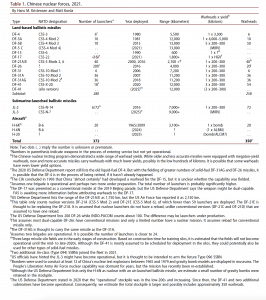
Plutonium production
How much and how fast the stockpile can grow will depend upon China’s inventories of plutonium, highly enriched uranium, and tritium. The current inventories can easily support a doubling of the stockpile, but a tripling—and certainly a quadrupling—would probably require production of additional material. Currently, there are few constraints on China’s ability to develop or acquire highly enriched uranium and tritium, but China could potentially be limited by its current plutonium stocks. Production of military plutonium reportedly ceased in the mid-1980s, and there are no public reports that it has resumed (Zhang 2018). It is technically possible, however, for China to acquire significant stocks of plutonium using its civilian reactors, including two CFR-600 fast-breeder reactors that are currently under construction and scheduled to come online in 2023 and 2026, respectively (Von Hippel 2021; Jones 2021; Zhang 2021). In 2021, an edited volume from the Nonproliferation Education Policy Center estimated that through these methods, China would be able to potentially develop between 990 and 1,550 nuclear warheads by 2030; however, the study’s preface—co-authored by the previous two consecutive US assistant secretaries of state for international security and nonproliferation—is careful to point out that there is no indication “that Beijing necessarily intends to divert these huge quantities of plutonium to weapons, but that it could do so and might yet choose to” (Ford and Countryman 2021).
Yet the 2021 Pentagon appears at least in part to rely on this study in making its projection for how many nuclear weapons China intends to have by 2030 (US Defense Department 2021, 92).
US estimates of Chinese nuclear weapons
The US declaration in 2020 that China had in the low-200s of operational nuclear warheads was a surprise because the number was lower than expected, and much lower than the many hundreds —even thousands—of warheads that some have claimed in recent years (Heinrichs 2020; Howe 2020; Schneider 2019; Karber 2011). Although the lower estimates have varied, they have generally been correct, while the higher estimates and projections for significant increases have been incorrect. When rumors about much higher estimates emerged nearly a decade ago, Gen. Robert Kehler, then-commander of US Strategic Command, said: “I do not believe that China has hundreds or thousands more nuclear weapons than what the intelligence community has been saying, . . . that the Chinese arsenal is in the range of several hundred” nuclear warheads (Kristensen 2012).
Similarly, many previous projections from the US intel-ligence community about Chinese nuclear weapons have never come to pass. During the 1980s and 1990s, US government agencies published several projections for the number of Chinese nuclear warheads. A US Defense Intelligence Agency study from 1984 estimated that China had 150 to 360 nuclear warheads and projected it could increase to more than 800 by 1994 (Kristensen 2006). That projection did not come true. Another Defense Intelligence Agency study from 1999 projected that China might have over 460 nuclear weapons by 2020 (US Defense Intelligence Agency 1999). That projection also did not come true.
In 2019, the Defense Intelligence Agency offered another estimate and projection: “We estimate . . . the number of warheads the Chinese have is in the low couple of hundreds,” and “over the next decade, China will at least double the size of its nuclear stockpile” (Hudson Institute 2019). Projections made in the past have varied considerably. Most were too high and too early. Figure 2 plots all of these estimates, alongside our own, over time. The exaggerated projections of the past underscore why it is prudent to be cautious about new ones, but the discovery of construction of three large missile silo fields makes the Defense Intelligence Agency’s latest projection more credible. A more than doubling of the stockpile, according to the Defense Department report, can be achieved “without new fissile material production,” apparently indicating that China has not resumed production of fissile material for nuclear weapons (US Defense Department 2020a, 87).

Yet in early 2021, the commander of US Strategic Command, Adm. Charles Richard, went even further than the Defense Intelligence Agency. During his testimony before Congress in April 2021, he said that China is “well ahead of the pace necessary to double their nuclear stockpile by the end of the decade” (Richard 2021a). A couple of months earlier, in January 2021, Richard wrote in US Naval Institute Proceedings that the Chinese stockpile could “triple or quadruple” over the next decade (Richard 2021b). And in November 2021, the Pentagon’s annual report to Congress projects that China might have 700 deliverable warheads by 2027, and possibly as many as 1,000 by 2030 (US DefenseDepartment 2021, 90).
Such increases would require the deployment of a significant number of additional launchers, including MIRV-equipped missiles. It seems likely that the new projection assumes that China plans to deploy large numbers of MIRV’ed missiles in the new missile silo fields that are currently under construction. But there are several unknown factors. First, how many of the new silos will be loaded? China might build more silos than missiles to create a “shell game” that would make it harder for an adversary to target the missiles. Second, how many of the missiles will be MIRV’ed, and with how many warheads? Many non-official sources attribute very high numbers of warheads to MIRVed missiles (for example, 10 warheads per DF-41), but the actual number will likely be lower to maximize the range of the missile (perhaps three to five each, perhaps less). This is because we believe that the main purpose of the massive silo construction program is to safeguard China’s retaliatory capability against a surprise first-strike. And the main purpose of the MIRV program is probably to ensure penetration of US missile defenses, rather than to maximize the warhead loading of the Chinese missile force. As the United States strengthens its offensive forces and missile defenses, China will likely further modify its nuclear posture to ensure the credibility of its retaliatory strike force, including deploying hypersonic glide vehicles.
The projected increase has unsurprisingly triggered a wide range of speculations about China’s nuclear intentions. In 2020, Trump administration officials suggested that “China no longer intends to field a minimal deterrent,” and instead strives for “a form of nuclear parity with the United States and Russia” (Billingslea 2020). These statements were echoed in August 2021 by the Deputy of US Strategic Command, who stated that “There’s going to be a point, a crossover point, where the number of threats presented by China will exceed the number of threats that currently Russia presents,” noting that this point would likely be reached “in the next few years” (Bussiere 2021). Indeed, based on what we can observe in the massive silo construction program, it seems possible that China’s ICBM force in the foreseeable future could exceed that of either Russia and the United States.
Even if the Chinese stockpile quadrupled in size, it would still only make up a fraction of the US and Russian stockpiles. This fact has enabled the Chinese government to reject it as “unrealistic to expect China to join the two countries in a negotiation aimed at nuclear arms reduction” (Ministry of National Defense of the People’s Republic of China 2020). Bussiere subsequently clarified, however, that “We don’t approach it from purely a numbers game. It is what is operationally fielded, . . . status of forces, posture of those fielded forces. So, it is not just a stockpile number” (Bussiere 2021).
Nuclear testing
The growth of the Chinese nuclear stockpile also depends on the size of its warheads. The nuclear weapons testing program of the 1990s partially supported development of the warhead(s) currently arming the DF-31 ICBMs. The MIRV’ing of the DF-5B liquid-fueled, silo-based ICBM might have used the same warhead. The large DF-41 could potentially use the same warhead. Fielding of a smaller warhead would likely require additional nuclear tests.
The US State Department’s 2020 Compliance Report assesses that some of China’s actions at its Lop Nur nuclear testing site “raise concern” about China’s adherence to the United States’ “zero-yield” standard. However, the report does not explicitly accuse China of conducting such tests, nor does it present any evidence to that effect. Instead, the report merely states that “the United States cannot rule out the possibility that China could have conducted activities at its test site that are inconsistent with its moratorium commitment” (US State Department 2020, 50). Open-source satellite imagery analysis has subsequently indicated that China appears to be expanding the Lop Nur site, with the construction of approximately a dozen concrete buildings near the Lop Nur airfield, as well as a possible new tunnel at the test site itself (Brumfiel 2021a). Satellite imagery shows what appears to be new drainage areas, roads, spoil piles, and covered entrances (Brumfiel 2021b). If China did conduct low-yield nuclear tests at Lop Nur, it would violate its responsibility under the Comprehensive Test Ban Treaty, which it has signed but not ratified. However, it is not clear that such testing would give it a military advantage.
Nuclear doctrine and policy
China has maintained a doctrine of minimum deterrence since its first nuclear test in 1964. Historically, Chinese leaders have emphasized that a credible second-strike capability would be sufficient to deter an attack on China and placed the bulk of their efforts into ensuring the survivability of their nuclear arsenal. As such, the People’s Liberation Army has maintained a “low alert level” for its nuclear forces and keeps most of its warheads at a central storage facility in the Qinling mountain range, though some are kept at smaller regional storage facilities.1
The 2020 Pentagon report reaffirmed that “China almost certainly keeps the majority of its nuclear force on a peacetime status—with separated launchers, missiles, and warheads.” But the report also described that the People’s Liberation Army Rocket Force brigades conduct “combat readiness duty” and “high alert duty” drills, which “apparently includes assigning a missile battalion to be ready to launch and rotating to standby positions as much as monthly for unspecified periods of time” (US Defense Department 2021, 91). Some Chinese military officials have reportedly advocated for increasing the readiness of China’s nuclear missiles (Kulacki 2016)
Increased readiness and alert drills do not necessarily require nuclear warheads to be installed on the missiles or prove that they are installed all the time during this time. A nuclear attack against China is unlikely to come out of the blue and is more likely to follow a period of increasing tension and conventional warfare, allowing the warheads to be mated at that point. In April 2019, the Chinese delegation to the Preparatory Committee for the 2020 Review Conference of the Parties to the Treaty on the Non-Proliferation of Nuclear Weapons provided a generic description of its alert posture and the stages that Chinese nuclear forces would go through in a crisis:
The command of the nuclear force in China is highly centralized. Unit operations must be carried out in the strictest and most accurate compliance with the orders of the Central Military Commission. In peacetime, the nuclear force is maintained at a moderate state of alert. In accordance with the principles of peacetime-wartime coordination, constant readiness, and being prepared to fight at any time, China strengthens its combat readiness support to ensure effective response to war threats and emergencies. If the country faced a nuclear threat, the alert status would be raised and preparations for nuclear counter-attack undertaken under the orders of the Central Military Commission to deter the enemy from using nuclear weapons against China. If the country were subjected to nuclear attack, it would mount a resolute counter-attack against the enemy (emphasis added) (Ministry of Foreign Affairs of the People’s Republic of China 2019).
The “moderate state of alert” in peacetime might involve designated units to be deployed in high combat-ready condition with nuclear warheads in nearby storage sites under control of the Central Military Commission that could be released to the unit quickly if necessary.
Whatever the status is, the idea of missiles on alert with nuclear warheads installed is a central element of the Pentagon’s expectation that China might adopt a “launch-on-warning” posture in the future. In April 2021, the Commander of US Strategic Command told Congress that “While China keeps the majority of its forces in a peacetime status, increasing evidence suggests China has moved a portion of its nuclear force to a Launch on Warning (LOW) posture and are adopting a limited ‘high alert duty’ strategy” (US Defense Department 2020a, 85; Richard 2021a, 7). As evidence, the Pentagon notes the construction of new ICBM silos for solid-fuel missiles, coupled with an emphasis on developing strategic early warning systems and modernized command and control. In July 2021, State Department officials also noted that “Since 2017 [the People’s Liberation Army] has also conducted exercises involving launch-on-warning, and now has deployed at least one satellite into orbit for its [LoW] posture” (Joshi 2021b).
These data points, however, are not necessarily evidence of a shift to a more aggressive posture. China has deployed silo-based DF-5s and road-mobile ICBMs for decades that in a crisis would be armed with the intention to launch them before they are destroyed. China potentially could maintain its current strategy even with a large number of new silos and improved early-warning systems. The combination of silo-based solid-fuel missiles and early warning could be seen as a Chinese reaction to what it sees is an increasing risk against the survivability of its retaliatory nuclear force.
Both the United States and Russia operate large numbers of solid-fuel silo-based missiles and early-warning systems to be able to detect nuclear attacks and launch their missiles before they are destroyed. Furthermore, both countries insist that such a posture is both necessary and stabilizing. It seems reasonable to assume that China would seek a similar posture in order to safeguard its own retaliatory capability.
A Chinese early-warning system could potentially also be intended to enable a future missile defense system to intercept incoming missiles. The latest Pentagon report notes that China is developing an indigenous HQ-19 hit-to-kill mid-course missile defense system that could engage intermediate-range ballistic missiles and possibly ICBMs, although the latter would still take many years to develop (US Defense Department 2020a, 75). China already maintains several ground-based large phased array radars that contribute to its nascent early-warning capabilities and is reportedly developing a space-based early warning capability as well, potentially with Russia’s help (US Defense Department 2021, 93). Whatever the purpose, if China develops an early warning system in the future, it will almost certainly sooner or later produce false alarms about non-existing attacks and potentially trigger dangerous reactions—emergencies that Russian and US early-warning systems have encountered numerous times.
Additionally, the Chinese government has a long-standing policy not to use nuclear weapons first and not to use nuclear weapons against non-nuclear countries or nuclear-weapon-free zones. In July 2019, the Chinese State Council Information Office reiterated this policy in a national defense white paper:
China is always committed to a nuclear policy of no first use of nuclear weapons at any time and under any circumstances, and not using or threatening to use nuclear weapons against non-nuclear-weapon states or nuclear-weapon-free zones unconditionally. China advocates the ultimate complete prohibition and thorough destruction of nuclear weapons. China does not engage in any nuclear arms race with any other country and keeps its nuclear capabilities at the minimum level required for national security. China pursues a nuclear strategy of self-defense, the goal of which is to maintain national strategic security by deterring other countries from using or threatening to use nuclear weapons against China (State Council Information Office of the People’s Republic of China 2019).
US military officials have long mistrusted the Chinese no-first-use pledge and have publicly sought to discredit it. In February 2020, for example, the Commander of US Strategic Command testified to Congress that he could “drive a truck through that no-first-use policy.” However, he immediately walked that back, noting that his assessment was based upon “very little” insight into how China interprets its own no-first-use policy (Richard 2020b). Following the open-source disclosures of hundreds of new missile silos across China, Adm. Richard again suggested that “These capabilities bring into question China’s stated ‘No First Use’ policy declaration and implied minimum deterrent strategy” (Richard 2021a, 7). Although there is much discussion in China about increasing the size and the readiness of the nuclear arsenal as well as when the no-first-use policy would apply, there is no evidence to suggest that the Chinese government has deviated from these longstanding policies (Santoro and Gromoll 2020).
In the past, Chinese officials have privately stated that China might respond with nuclear weapons if its nuclear forces were attacked with conventional weapons. If that view is reflected in national strategy, it would contradict the no-first-use pledge. Despite all of these considerations, however, the 2020 US Defense Department report assured: “There has been no indication that national leaders are willing to attach such nuances and caveats to China’s existing [no-first-use] policy” (US Defense Department 2020a, 86). Some analysts suggest that China’s no-first-use policy has a much higher threshold than what US officials often describe, noting that Chinese doctrine is very clear that although the alerting process could take place before an enemy nuclear strike, a Chinese nuclear strike would only take place “after the enemy has carried out a nuclear attack against our country” (Kulacki 2020).
Land-based ballistic missiles
China is continuing the gradual modernization of its land-based, nuclear-capable missile force. The pace and scope of this effort appears to be increasing significantly with the construction of more than 300 new silos in at leastthree missile silo fields, as well as construction of several new bases for road-mobile missile launcherss. Overall, we estimate that the People’s Liberation Army Rocket Force possesses approximately 280 land-based missiles that can deliver nuclear warheads. Of those, about 170 can hit some part of the United States (including Guam) with some 245 warheads. The number of ICBMs that can hit the continental United States is lower: about 110 missiles with approximately 185 warheads. The Pentagon anticipates that the number of ICBM warheads capable of threatening the United States might increase to roughly 200 by 2025 (US Defense Department 2020a, 55). Most of China’s ballistic missiles––about 450––are medium- and intermediate-range missiles intended for regional missions, and most of those are not nuclear. We estimate there are about 60 nuclear warheads assigned to these regional missiles.
To accommodate the growing missile force, the number of Chinese missile bases is increasing. This increase is predominantly caused by the growing inventory of conventional missiles, but it is also a product of nuclear modernization. According to one study, the number of ballistic missile brigades has increased by over 35 percent in just three years (Singer and Xiu 2020). Some of those are still under construction. The transparency of China’s missile force has been greatly enhanced in recent years by the unique work of Decker Eveleth (Eveleth 2020a). Based on that work and other information, we estimate the People’s Liberation Army Rocket Force currently has approximately 40 brigades with ballistic or cruise missile launchers. Of those brigades, approximately half operate ballistic missile launchers with nuclear capability, a number that is likely to grow further as bases currently under construction are completed (see Table 2, below). Russia, in comparison, operates about 50 nuclear brigades (known as regiments in the Russian military) (Kristensen and Korda 2020a).
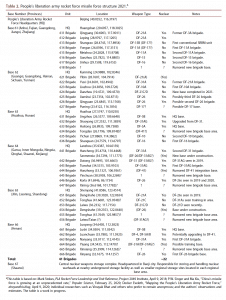
Intercontinental ballistic missiles
Perhaps the most significant recent development in China’s nuclear arsenal is the construction of what appears to be nearly 300 missile silos in three areas across northern China. Over the past few years, open-source researchers had documented the modernization of missile silos and training areas across China in locations like Sundian, Wuzhai, and Jilantai, but it remained unclear how these silos might be operationalized (Dill 2018; Kristensen 2019b; LaFoy and Eveleth 2020). In February 2021, the Federation of American Scientists’ Hans Kristensen noted the presence of inflatable air domes covering multiple suspected silo headworks at Jilantai, along with telltale semi-circle wall structures which would be used to build the silo walls (Kristensen 2021).
In June 2021, Decker Eveleth disclosed the presence of 120 construction sites for likely missile silos near the northwestern city of Yumen, in China’s Gansu province (Warrick 2021; Lewis and Eveleth 2021) (See Figure 3 below). The missile field, which began construction in March 2020, contains dozens of inflatable air domes identical to those visible at Jilantai. Satellite imagery appears to confirm that the complex will contain missile silos, as hatch fixtures become clearly visible after the air domes are removed. In July 2021, an additional 110 construction sites for likely missile silos near Hami, in Eastern Xinjiang, were disclosed by the Federation of American Scientists’ Matt Korda (Broad and Sanger 2021; Korda and Kristensen 2021). The Hami silo field is in a much earlier stage of development, as construction appears to have begun at the start of March 2021. The silos at both the Yumen and Hami missile fields—as well as the training site as Jilantai—are positioned in an almost perfect grid pattern, roughly three kilometers apart, with adjacent support facilities, and spans an area of approximately 800 square kilometers. The sites are located deeper inside China than any other known ICBM base, and beyond the reach of the United States’ conventional and nuclear cruise missiles. On several separate occasions, different elements of the US government appeared to validate the open-source assessment that the construction sites were missile silo complexes (US Strategic Command 2021; Lendon and Gan 2021; Joshi 2021a).
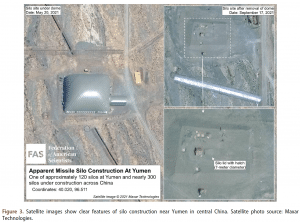
In mid-August, the China Aerospace Studies Institute—a research unit affiliated with the US Air Force—disclosed the existence of a potential third missile silo complex near Ordos, or Hanggin Banner (Lee 2021a). The Ordos field, which began construction in April or May 2021, has a different layout and different inflatable dome shapes to both the Yumen and Hami sites, and so far appears to include more than 80 construction sites although it could potentially grow further.
In total, these discoveries indicate that China might be constructing approximately 300 new missile silos, which would constitute the most significant expansion of the Chinese nuclear arsenal ever. The number of new Chinese silos under construction would exceed the number of silo-based ICBMs operated by Russia and would be more than half the size of the entire US ICBM force. If each construction site yields a new silo, and if each new silo is filled with a single-warhead missile (DF-41 or DF-31A), then the number of warheads on Chinese ICBMs could potentially increase from about 185 warheads today to approximately 450 warheads in the future. If all of the new silos were loaded with the new MIRVed DF-41 ICBMs, then the Chinese ICBM force could carry approximately 1,000 warheads (assuming three warheads per missile) once all three silo fields are completed. It should be emphasized, however, that it is currently unknown how China will operate the new silos, whether they will all be filled, and how many warheads each missile will carry. Eitherway, the sheer number of silos will likely have a significant effect on US strike planning against China.
Although China has deployed ICBMs in silos since the early 1980s, building missile silos on this scale is a significant shift for Chinese nuclear policy. The decision to do so has probably not been caused by a single issue but by a combination of factors, including the goal of protecting the retaliatory capability against a first strike, overcoming the potential effects of adversarial missile defenses; better balancing the ICBM force between mobile and silo-based missiles; increasing China’s nuclear readiness and overall nuclear strike capability to account for improvements to Russia’s, India’s, and the United States’ nuclear arsenals; and strengthening a sense of national prestige.
Additionally, the shift in emphasis towards silo-based missiles could be tied to China’s longstanding transition from older, transportable, liquid-fuel, slow-launching missiles to longer-range, solid-fuel, quicker-launching missiles. China’s last liquid-fuelmobile ICBM—the DF- 4 (CSS-3)—is down to a single brigade and probably in the process of being retired. China’s force of approximately 20 liquid-fueled, silo-based DF-5 ICBMs continues to be upgraded, but their lengthy fueling process makes them vulnerable to attack. Currently two versions are deployed—the DF-5A (CSS-4 Mod 2) and the MIRVed DF-5B (CSS-4 Mod 3)—and a third version known as the DF-5C appears to be in development. The Pentagon’s latest report to Congress noted that the DF- 5B is capable of carrying up to five MIRVs (US Defense Department 2020a, 56), two more than we had previously assumed. We estimate that half of the DF-5s are currently equipped to carry MIRVs, although it is possible that China intends to equip all of them with MIRVs before the new DF-41 probably takes over the role in the future.
China debuted its first solid-fueled ICBMs in 2006 with the DF-31 (CSS-10 Mod 1). It is a three-stage, road-mobile missile that is transported in a 15-meter canister on a six-axle transporter erector launcher. The DF-31 has a range of about 7,200 kilometers (km) but cannot reach the continental United States from its deployment areas in China.2 It is presumed to have taken over much of the regional targeting (of Russia, India, and Guam) done by the soon-to-be-retired DF-4. Currently, China has only a single DF-31 brigade deployed, with fewer than 10 launchers that might soon be upgraded to the new DF-31AG.
The DF-31A (CSS-10 Mod 2) is an extended-range version of the DF-31, but with an apparently identical launcher. With a range of 11,200 kilometers, the DF-31As have the capability to reach about half of the continental United States, depending on launch area. Each DF-31A brigade used to operate just six launchers but some have recently been upgraded to 12 (Eveleth 2020b). The National Air and Space Intelligence Center estimates the number of DF-31A launchers to be more than 15; however, given the number of bases observed with the launchers, we estimate that China deploys about 36 DF-31As in three brigades (National Air and Space Intelligence Center 2020, 29). The DF-31A brigades are being upgraded to the DF-31AG.
Since 2017, China’s road-mobile ICBM modernization effort has focused on replacing the DF-31s and DF-31As with the DF-31AG, a new launcher that is thought to carry the same missile as the DF-31A but has improved off-road capability. After it was first displayed in 2017, the National Air and Space Intelligence Center’s most recent repor tlists the DF-31AG as “UNK”[unknown] for warheads per missile. By contrast, the DF-31A is listed with one warhead, which suggests that the AG version could potentially have a different payload (National Air and Space Intelligence Center 2020, 29). A 2018 Defense Department report described the DF-31AG as “an enhanced version of the DF-31A ICBM that also uses a transporter erector launcher to increase its mobility and survivability” (US Defense Department 2018a, 76). In September 2021, a report stated that personnel from the People’s Liberation Army Rocket Force’s DF-21-equipped 612 Brigade in southeastern China was training with the DF- 31AG, indicating that the unit might be upgrading (Lee 2021b).
The next phase of China’s ICBM modernization is the integration of the long-awaited DF-41 ICBM (CSS-20), which has been reported in development since at least 1997. Eighteen DF-41s were mobilized for China’s 70th National Day parade in October 2019; the 16 that were displayed were said to come from two brigades (New China TV 2019). In April 2021, the Commander of US Strategic Command testified to Congress that the DF-41 “became operational last year, and China has stood up at least two brigades” (Richard 2021a, 7). This matches the assessment of the National Air and Space Intelligence Center, which estimates that China has at least 16 launchers for the DF-41 system (National Air and Space Intelligence Center 2020, 29). The US Defense Department believes that this missile is capable of carrying MIRVs, and rumors have spread in the media that the DF-41 can carry six to 10 warheads (US Defense Department 2019, 45; Gertz 2016). Such rumors are often exaggerated, and the number of warheads that the DF-41 can carry may be significantly less, perhaps three to maximize range. Nor should it be assumed that all DF-41s will necessarily be equipped with MIRVs. The DF-41 is expected to eventually replace the aging DF-5 and could potentially be launched from silos and railcars, in addition to mobile transporter erector launchers (US Defense Department 2019, 45). According to the US Defense Department, it is likely that the DF-41 could eventually be deployed in some or all of China’s new silos fields at Yumen, Hami, and Ordos (Gertz 2021).
Land-based medium- and intermediate-range ballistic missiles
For years, the DF-21 missile family constituted China’s primary regional nuclear-capable system. The DF-21A (CSS-5 Mod 2) is a two-stage, solid-fuel, road-mobile, medium-range ballistic missile with a range of about 2,150 km (the unclassified range is 1,750 km).Since 2016, China has been fielding a new version, the CSS-5 Mod 6, possibly known as DF-21E. The new Mod designation indicates it carries an enhanced missile. We estimate that China has approximately 40 launchers for the nuclear DF-21A/E. China has also deployed two conventional versions: the DF-21C (CSS-4 Mod 4) land-attack missile and the DF-21D (CSS-5 Mod 5) anti-ship missile. Early indicators suggest that the DF-21D can be launched both from the ground and is being integrated onto China’s H-6 N bombers.
Over the past four years, the primacy of the DF-21 among China’s regional nuclear forces has been overtaken by the DF-26 (CSS-18) intermediate-range ballistic missile in significant numbers. The DF-26, which is dual-capable and launched from a six-axle road-mobile launcher, was displayed during a parade in 2016, and the first brigade stood up in April 2018 outside Xinyang in Henan Province (Ministry of National Defense of the People’s Republic of China 2018). In its annual reports, the Pentagon states that over the past three years, the DF-26 force has grown from 16 to 30 launchers in 2018, to 80 launchers in 2019 (which probably was the upper end of a range estimate of 55 to 80), to 200 launchers in 2020 with “more than 200 missiles” (US Defense Department 2020a, 59). In contrast, a recent US Indo-Pacific Command briefing listed 100 DF-26 launchers (Kristensen 2020a). It is possible that the larger DOD number included launchers in production. The deployed number has almost certainly increased above 100 by now.
The majority of the dual-capable DF-26s serve a conventional mission, including an anti-ship variant, and are probably not assigned nuclear warheads. China claims to have successfully tested the anti-ship variants of both the DF-21 and the DF-26 missiles against target vessels in August 2020 (Trevithick 2020; Huang 2020a). A small number of DF-26 launchers, perhaps 20, might serve a regional nuclear role alongside the DF-21. We estimate that four or five DF-26 brigades have become operational, and several more are in the process of standing up (see Table 2).
Like the existing DF-4 and DF-31 ICBMs, the 4,000-kilometer range DF-26 is capable of targeting important US bases in Guam. The DF-26 was reported to be operating in a new training area in Inner Mongolia in January 2019 and has been seen at several other brigades (Kristensen 2019a; Kristensen 2020b). Unlike the DF-4 and DF-31, however, the DF-26 is both dual-capable and more accurate, and so could potentially provide China with its first precision nuclear strike capability, although it should be emphasized that precision is primarily a conventional requirement. The 2020 Pentagon report notes that there is also an anti-ship variant of the DF-26 (US Defense Department 2020a, 73).
The dual-capable role of the DF-26 (and also the DF-21) raises some thorny issues about command and control and the potential for misunderstandings in a crisis. Preparations to launch (or the actual launch of) a DF-26 with a conventional warhead against a US base in the region could potentially be misinterpreted as a launch of a nuclear weapon and trigger nuclear escalation (or even preemption). The mixing of nuclear and conventional capability on medium- and intermediate-range ballistic missiles has been implemented in China, India, and Pakistan. Citing a 2017 Chinese defense industry publication, the US Defense Department also hypothesizes that the DF-26 might eventually be used to field a lower-yield warhead (US Defense Department 2020a, 88), although no evidence has been provided that China has plans to do so.
Finally, the 70th National Day parade in October 2019 saw the debut of China’s DF-17 (CSS-22) hypersonic boost-glide missile. Sixteen launchers were displayed and presented by the official announcer as serving a conventional role in the People’s Liberation Army Rocket Force’s mission (New China TV 2019). However, unofficial sources connected to the Chinese defense industry have claimed that the missile will be dual-capable (Huang 2019), and during Senate testimony the commander of US Strategic Command listed the DF-17 as a “strategic nuclear system” (Richard 2020a, 4). It is thought that the DF-17 is currently being integrated into several brigades. In late 2020, the South China Morning Post reported that China had deployed at least one DF-17 brigade to southeast China; however, this has not been confirmed (Chan 2020a). Chinese state television footage from December 2020 also appeared to show a DF-17 transporter erector launcher at the People’s Liberation Army Rocket Force’s 627 brigade in Jieyang (Lee 2020b).
Land-based short-range ballistic missiles
Despite many unsubstantiated Internet rumors to the contrary, we estimate that all of China’s short-range ballistic missiles are conventional, with possibly one exception: the DF-15 (CSS-6). After reporting that the nuclear test China conducted on August 16, 1990, may have been “related to development of a warhead for a Chinese short-range ballistic missile” (CIA 1990, 1), the CIA concluded three years later “that China will begin to field nuclear-armed CSS-X-6s next year.” The 1993 memorandum went on, “China almost certainly has already developed the warhead for this system. Testing might be needed for formal weaponization or for additional warhead options” (CIA 1993, 5). Despite the apparent nuclear capability China developed at that time, though, it is unclear whether it ever completed and fielded a nuclear warhead for the DF-15. The 2020 Defense Department report to Congress lists the DF-15 as a conventional missile (US Defense Department 2020a, 55). If so, it is possible China might have developed the capability but never fielded it. Chinese state media appeared to indicate that the DF-15 was used in two missile tests conducted in August 2021; however, the observed flight path was approximately 1,400 kilometers––nearly double the estimated 800-kilometer range of the DF-15 (China Aerospace Studies Institute 2021). This could indicate that either the US government’s previous assessments of the DF-15’s range are incorrect, or the People’s Liberation Army Rocket Force obfuscated the launch of a different type of missile by showing imagery of the DF-15 instead.
Submarines and sea-based ballistic missiles
China has launched six Jin-class (Type 094) nuclear-powered ballistic missile submarines (SSBNs), which are based at the Longposan naval base near Yulin on Hainan Island. The two newest SSBNs, which were handed over to the People’s Liberation Army Navy in April 2020, are believed to be variants of the original Type 094 design and are known as the Type 094A. One of those new SSBNs—Changzheng 18—was commissioned to enter service in April 2021, on the 72nd anniversary of the People’s Liberation Army Navy, indicating that at least five boats are now operational (Chan 2021). The sixth boat will likely become operational soon if it has not happened already. The Type 094A boats include a more prominent hump, which initially triggered some speculation as to whether they could carry up to 16 JL-2 (CSS- N-14) submarine-launched ballistic missiles (SLBMs), instead of the usual 12 (Sutton 2016; Suciu 2020). However, satellite images confirm that the new subs are equipped with 12 launch tubes each (Kristensen and Korda 2020b).
Each JL-2 is equipped with a single warhead and, possibly, penetration aids. The JL-2, which is a modified version of the DF-31, is thought to have a range of approximately 7,200 kilometers, although US range estimates have varied over the years. Such a range would be sufficient to target Alaska, Guam, Hawaii, Russia, and India from waters near China, but unless the submarine carrying the missile sailed deep into the Pacific Ocean, it could not target the continental United States.
Although the Jin-class is more advanced than China’s first experimental SSBN—the single and now inoperable Xia (Type 092)—it is still a very noisy design; it is suspected that the Type 094 remains two orders of magnitude louder than the top Russian or American SSBNs (Coates 2016). For that reason, China would face constraints and challenges when operating its SSBN force in a conflict (Kristensen 2009a). It therefore seems likely that China will end production after its now-completed six boats and turn its efforts to developing the quieter third-generation (Type 096) SSBN, which is scheduled to begin construction in the early 2020s. The completion of a new construction hall at Huludao, where the People’s Liberation Army Navy’s submarines are built, indicates that work may soon begin on the Type 096, which is expected to be larger and heavier than the Type 094 (Sutton 2020). The tail of a new submarine—possibly that of the first Type 096 boat—was visible through commercial satellite imagery in February 2021, indicating that China may have begun construction on the first of the new SSBNs (Sutton 2021).
Given that China’s SSBNs are assumed to have approximately a 40-year service life, the US Defense Department expects that the Type 094 and Type 096 boats will operate concurrently (US Defense Department 2020a, 86). If so, that could potentially result in a future fleet of eight to 10 SSBNs.
It remains uncertain whether Jin-class submarines have ever sailed on deterrent patrols with nuclear weapons on board. US Chief of Naval Operations Vice Admiral Joseph Mulloy said in early 2015 that one Chinese SSBN had gone on a 95-day patrol (Osborne 2015). In late 2015, commander of US Strategic Command Adm. Cecil Haney said Chinese SSBNs had been at sea and that, although he did not know if they had nuclear weapons on board, he had to assume that they did (Gertz 2015). In early 2016, the head of the US Defense Intelligence Agency said that the Chinese navy had “deployed the Jin-class nuclear-powered ballistic missile submarine in 2015” on an extended patrol far from Chinese waters (Stewart 2016, 12). Moreover, satellite photos of the SSBN base on Hainan Island show that several Jin-class submarines—sometimes all four—are absent. Although this does not prove they sailed on patrol (one or two could potentially be hiding inside the submarine tunnel at the base) or carried nuclear weapons, it shows that the fleet is active. Despite these uncertainties, Western military officials have privately stated that the United States, Japan, Australia, and the United Kingdom “are already attempting to track the movements of China’s missile submarines as if they are fully armed and on deterrence patrols” (Torode and Lague 2019).
To fully develop a survivable sea-based nuclear deterrent, the Chinese SSBN fleet will face several doctrinal, technical, and operational constraints. Although Chinese missile forces frequently practice the procedures required to load warheads onto missiles, China’s Central Military Commission has long resisted handing out nuclear warheads to the armed services to deploy on missiles under normal circumstances. Giving custody of nuclear warheads to deployed submarines during peacetime would constitute a significant change in Chinese policy. Moreover, before doing so, the Central Military Commission and China’s navy would first have to build up experience operating an SSBN force during realistic military operations, which would require development of reliable command-and-control technologies and procedures.
The SSBNs would also need a launch destination. Even if China deployed nuclear-armed SSBNs to sea in a crisis, where would they sail? For a JL-2 to be able to strike targets in the continental United States, a Jin-class SSBN would have to sail across the East China Sea and well into the Pacific Ocean, through dangerous choke points where it could be detected and threatened by hostile anti-submarine warfare. It seems more likely that during conflict China would keep its SSBNs inside a protected “bastion” in the South China Sea. Whenever they put to sea in this region, China’s SSBNs typically appear to be accompanied by a protection detail, including surface warships and aircraft (and possibly attack submarines) capable of tracking adversarial submarines (Torode and Lague 2019).
China’s next-generation Type 096 SSBNs will carry an extended-range SLBM, the JL-3, which the National Air and Space Intelligence Center estimates as having a range in excess of 10,000 km (National Air and Space Intelligence Center (2020, 33). Although such a range would allow a submarine to target the northwestern parts of the continental United States from Chinese waters, it would still not be able to target Washington, DC without sailing past northeast Japan. Chinese media sources describe the JL-3 as “equivalent to or similar to the French M51” SLBM, and note that it has an increased diameter from the JL-2 and includes a carbon fiber casing, which will allow for an extended range (Coates 2020). In its most recent Ballistic and Cruise Missile Threat report, the National Air and Space Intelligence Center notes that the JL-3 will be capable of launching “multiple” warheads per missile (National Air and Space Intelligence Center 2020, 33).
The People’s Liberation Army Navy reportedly conducted its first test of the JL-3 in November 2018 (Gertz 2018) and appears to have conducted at least two additional tests since then. The first round of JL-3 tests was conducted using a Type 032 auxiliary test submarine; however, the most recent test of the missile, in December 2019, was rumored to have been conducted from a Type 094 SSBN (Chan 2020b). But if the new Type 096 SSBN is larger than the Jin-class and the JL-3 has significantly greater range, then it seems doubtful that a Jin-class would have been capable of launching the JL-3. These tests, as well as the recent nomination of the JL-3 design team for the “National Award for Excellence in Innovation,” indicate that the missile is currently in an advanced stage of development, and is expected to be integrated with the new Type 096 SSBNs perhaps in 2025 (Liu 2020; Huang 2020b). Some private sources speculate the Type 096 will carry 24 missiles (Chan 2020b), but there are no public official sources confirming this. Based upon current and projected missile inventories, it seems more likely that it will carry 12 to 16 missiles.
Bombers
China developed several types of nuclear bombs and used aircraft to deliver at least 12 of the nuclear weapons that it detonated in its nuclear testing program between 1965 and 1979. But the People’s Liberation Army Air Force nuclear mission remained officially dormant well into the 2000s, probably because its older bomb-equipped aircraft were unlikely to be useful in the event of a nuclear conflict. Even as recently as 2017, the US Defense Department assessed that the “People’s Liberation Army Air Force does not currently have a nuclear mission” (US Defense Department 2017, 61).
Of course, this did not stop the People’s Liberation Army Air Force from maintaining a residual capability to deliver nuclear weapons from bombers, and various Chinese military museums display a variety of shapes of what are said to be strategic and tactical nuclear bombs (globalsecurity.org 2020; CTBTO 2020). A Defense Intelligence Agency brief in 1984 estimated that China had about 165 nuclear bombs for aircraft, although the agency also stated: “We are unable to identify associated airfield storage sites” (US Defense Intelligence Agency 1984, 3–4). By the early-1990s, the agency reduced the estimate to 75 bombs, but said H-6 (Tu-16) and H-5 (Tu-28) medium-range bombers and A-5 fighter-bombers were “all capable of delivering nuclear weapons” (US Defense Intelligence Agency 1991, 3). And the US National Security Council informed Congress in 1993: “The Chinese Air Force has no units whose primary mission is to deliver China’s small stockpile of nuclear bombs. Rather, some units may be tasked for nuclear delivery as a contingency mission” (National Security Council 1993, 2).
Coinciding with a renewed emphasis on nuclear aircraft modernization, the US Defense Department reported in 2018 that the People’s Liberation Army Air Force “has been newly re-assigned a nuclear mission” and that the “H-6 and future stealth bomber could both be nuclear capable” (US Defense Department 2018a, 75, 34). The 2019 report references unidentified “Chinese media” sources that have apparently labelled the upgraded H-6 K as a “dual nuclear-conventional bomber” since 2016 (US Defense Department 2019, 41). The US Defense Department’s Nuclear Matters Handbook from February 2020 lists the H-6 as nuclear and “completely fielded within 10 years” (US Defense Department 2020b, 3). We estimate that for years China has maintained a small inventory of gravity bombs—perhaps up to 20—for potential contingency use by aircraft, even though it only recently has begun to reassign a formal nuclear mission to People’s Liberation Army Air Force units.
In addition to the gravity bombs, the Defense Intelligence Agency reported in 2016 that China was developing two air-launched ballistic missiles for the H-6 bomber, “one of which might include a nuclear payload” (Stewart 2016, 10). The missile, designated by the United States as CH-AS-X-13, will be carried by yet another modification of the H-6 bomber known as the H-6N BADGER, which made its debut appearance at the October 2019 parade and appears to be entering service with the People’s Liberation Army Air Force. The H-6N’s appearance is distinct from that of the H-6K dual-use bomber in that it is equipped with a nose-mounted in-flight refueling probe (Rupprecht 2019), and includes a modified fuselage that the US Defense Department believes can accommodate the nuclear-capable air-launched ballistic missile or possibly a drone (US Defense Department 2020a, 51). One of the first bomber units to get an operational nuclear capability might be the 106th Brigade at Neixiang Air Base in the southwestern part of Henan province; civilian video footage from October 2020 appears to show an H-6N bomber flying with the possible new air-launched ballistic missile––potentially carrying a hypersonic glide vehicle––just outside of Neixiang Air Base, which also appears to be one of China’s only airfields with an adjacent air defense site (Lee 2020a; Lee 2020c; Rupprecht and Dominguez 2020).
The air-launched ballistic missile in development was first tested in December 2016 and again in January 2018 (Panda 2019). The US Defense Department reported in early 2020 that a “TBD [name to be determined] ALBM [air-launched ballistic missile]” is “in research & development within 10 years” (US Defense Department 2020b, 3). Once complete, this nuclear air-launched ballistic missile will, “for the first time, provide China with a viable nuclear ‘triad’ of delivery systems dispersed across land, sea, and air forces” (US Defense Department 2019, 67).
To replace the H-6, China is developing a bomber with longer range and improved capabilities. US officials have stated for several years that the new bomber, known as H-20, will have a nuclear capability (Coats 2018, 7; US Defense Department 2019, 61). In early 2020 the US Defense Department described the H-20 as a “stealth” bomber whose production will begin within 10 years (US Defense Department 2020b, 3).
Cruise missiles
From time to time, various US military publications have asserted somewhat vaguely that one or more of China’s cruise missiles might have nuclear capability. However, we assess that although China might have developed warhead designs for potential use in cruise missiles, it does not have any active nuclear cruise missiles in its stockpile.
The CIA concluded in 1995 that a Chinese test scheduled for that year “may include warhead testing for … a cruise missile” (CIA 1995). In 2013, a US Air Force Global Strike command briefing listed the CJ-20 air-launched land-attack cruise missile carried by the H-6K as possibly dual-capable (Kristensen 2013). Likewise, in 2009 the Air Force described the DH-10 (now called DF-10) ground-launched cruise missile as “conventional or nuclear,” but in 2017 designated it and all other Chinese air-launched land-attack cruise missiles “conventional” (National Air and Space Intelligence Center 2017, 37). Even so, a nuclear modernization fact sheet published by the Pentagon in connection with the release of the 2018 Nuclear Posture Review claimed, without identifying them, that China had both air-launched and sea-launched nuclear cruise missiles (US Defense Department 2018b). It is possible, but unconfirmed, that the future H-20 could be equipped with a nuclear cruise missile.
Endnotes
- Nuclear weapons are stored in central facilities under the control of the Central Military Should China come under nuclear threat, the weapons would be released to the Second Artillery Corps to enable mis- sile brigades to go on alert and prepare to retaliate. For adescription of the Chinese alerting concept, see Kristensen (2009b). For more on warhead storage in China, see Stokes (2010). For anoverview of the People’s Liberation Army Rocket Force structure and organization, see Stokes (2018). For an insightful over- view of Chinese thinking about nuclear weapons and policies, see Santoro and Gromoll (2020).
- The “continental United States” as used here includes only the lower 48 states. US states and territories out- side of the continental United States include Alaska, Hawaii, Guam, American Samoa, and many tiny Pacific
Together, we make the world safer.
The Bulletin elevates expert voices above the noise. But as an independent nonprofit organization, our operations depend on the support of readers like you. Help us continue to deliver quality journalism that holds leaders accountable. Your support of our work at any level is important. In return, we promise our coverage will be understandable, influential, vigilant, solution-oriented, and fair-minded. Together we can make a difference.
Keywords: China, DF-41, H-6, ICBM, IRBM, SLBM, SSBN, nuclear weapons
Topics: Nuclear Notebook, Nuclear Risk, Nuclear Weapons



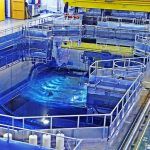
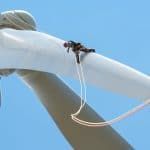
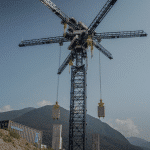


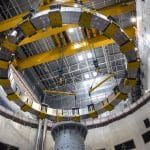
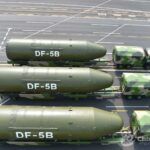


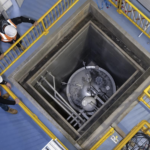










Kudos to Kristensen and Korda for their erudite work. It helps to clarify the threat that is hanging over all of our heads and energizes us in the abolition movement to work even harder promoting diplomacy and common sense.